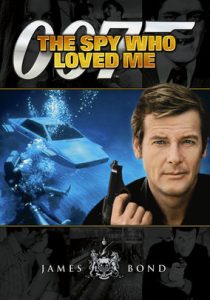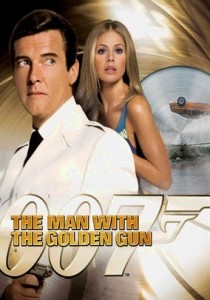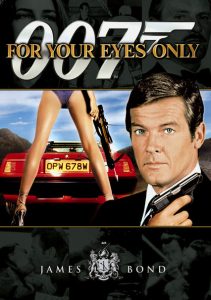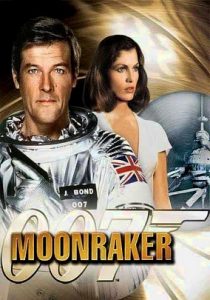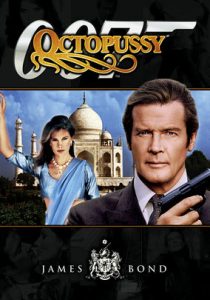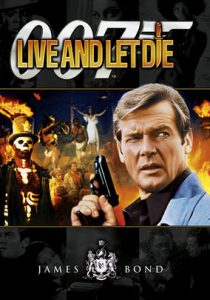The Spy Who Loved Me-1977
Director Lewis Gilbert
Starring Roger Moore, Barbara Bach
Top 250 Films #137
Scott’s Review #637
Reviewed April 27, 2017
Grade: A-
The Spy Who Loved Me (1977) is pure James Bond- an installment of the franchise that successfully contains all of the elements of an exceptional Bond film- and then some.
By this time Roger Moore was firing on all cylinders and had made the character of James Bond his own- Sean Connery who?
With his third appearance in the role, Bond exudes charisma and wry wit, combined with a fabulous story, sexy Bond girls, and a villain worthy of his role, The Spy Who Loved Me achieves near perfection, save for too drawn out of an ending- otherwise, an excellent, memorable film that does not feel dated in the least.
When Soviet and British submarines begin to vanish, the two sides team up and send their best agents forward to uncover the circumstances surrounding the disappearances.
Barbara Bach plays Major Anya Amasova, also known as Agent Triple X, a Soviet agent, and naturally Bond becomes enamored with her beauty and intelligence.
Together they face off against a megalomaniac named Karl Stromberg, who is intent on destroying the world with nuclear missiles and creating his underwater world. Stromberg’s sidekicks are Jaws, a giant with steel teeth, and a deadly vixen named Naomi.
Interestingly, if watched as a companion piece to a Bond film of the 1960s, as I did this time around (You Only Live Twice), the viewer will notice the change in how Bond female characters are treated.
No longer servile and obedient to the male characters (Bond specifically) Bond women are now his equals in every way, matching him in career success and intelligence.
The main “Bond girl”, (Anya), is a shining example of this, which the film immediately offers. In one of my favorite scenes, Anya is in bed with a handsome man- when “Agent Triple X” is paged, we assume the agent is the man until Anya slyly responds to the message- it is nonchalant, yet a brazen way to make the point that women have emerged as powerful and sexy figures in the modern Bond world.
The chemistry between Moore and Bach is immeasurably important to the success of the film and their romance is dynamic- they simply have “it” and their scenes smolder with sensuality. To complicate matters, Bond has killed an agent whom Anya was in love with and she plans to kill Bond as soon as their mission is victorious.
Director, Gilbert, also adds a slice of Bond’s back story- giving truth and rich history to the story and mentioning Bond’s deceased wife (married and killed in On Her Majesty’s Secret Service), a subject Bond deems off-limits.
This ode to the past only enhances the connection between these two characters.
Villains play an important part in the success of The Spy Who Loved Me.
Take Stromberg- he is sophisticated, mature, worldly, and rich- and quietly insane. He also has a lavish dining room in his underwater submarine with exotic fish swimming about through visible tanks- a gorgeous element to this film.
Through a trap door, victims meet their demise by a vicious killer shark swimming about. One unlucky female assistant, who has double-crossed Stromberg, meets her maker in bloody fashion. Later, Bond sees a severed hand floating about in one of the tanks.
This is great creative writing and adds nuances to the film.
Hulking henchman, Jaws, who would return in the next installment, Moonraker, dazzles and impresses with his deadly, steel teeth.
A great scene, aboard a high-speed train, and a throwback to 1963’s From Russia With Love, is action-packed.
Naomi meets her demise after an ill-fated helicopter chase scene. I would have liked to have gotten more screen time and gotten to know this character. Her brief, but obvious flirtation with Bond is all too short- and he never even gets to share a bed with her!
Not to be outdone, the locales in the film are lavish and gorgeous- Egypt and Italy are countries explored, and scenes are shot on location in each country in grand fashion.
The Egyptian pyramids are featured as a chase and a murder occur during a nighttime exhibit- also fantastic are the gorgeous shots of Sardinia- a beautiful region in Italy, where Stromberg’s hideout is set.
A mini gripe is a lengthy conclusion to the film. As Bond struggles to recalculate the two nuclear missiles set to destroy New York and Moscow, Bond must rush to make sure they do not hit their intended target.
The “final act” of the film just goes on too long with way too many soldiers and men running around in a panic. The action is great, but enough is enough by the end.
Roger Moore once commented that The Spy Who Loved Me (1977) was his favorite of all the Bond films to make- it is easy to see why he felt this way.
The film contains all of the necessary elements to make it one of the top entries in all of the film franchises and has a magnificent feel to it.
Oscar Nominations: Best Original Score, Best Original Song-“Nobody Does It Better”, Best Art Direction
